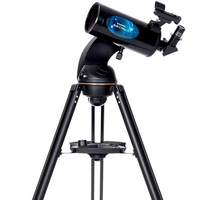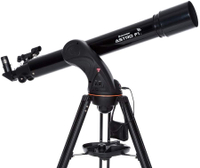Celestron Astro Fi Telescopes: Full Review
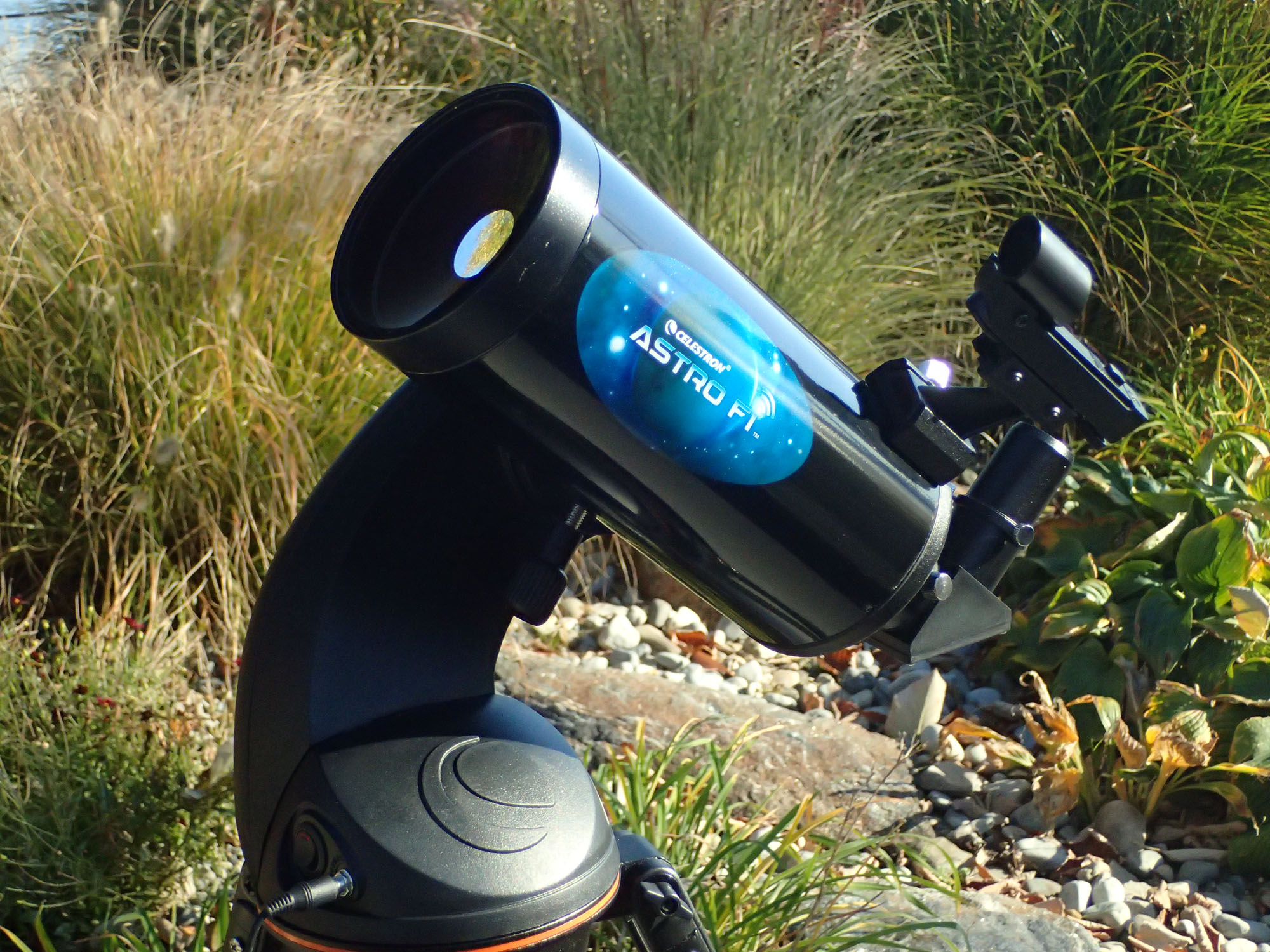
For beginners and young astronomers looking for a telescope that's easy to use, we recommend the Astro Fi 102 Maksutov-Cassegrain and Astro Fi 90 refractor scopes from Celestron.
Celestron Astro Fi 102 Mak-Cas Wi-Fi
- Maksutov-Cassegrain / AltAz Tripod / Go-To
- Most innovative, future proof and "digital"
- Average Price: $352
Celestron Astro Fi 90 Refractor Wi-Fi
- Refractor / AltAz Tripod / Go-To
- Average price: $280
Celestron recently found a very clever way to give you much more telescope for your money. But you need to be comfortable with digital devices.
Most "Go-To" scopes have microprocessors on board with many lines of dedicated software code and special-purpose keypads cabled to the mount. The Celestron Astro Fi telescopes do away with all that stuff, because you already own it! Your Apple or Android smartphone or tablet makes a perfectly excellent telescope controller.
All you need to do is download Celestron's free SkyPortal app from the Apple App Store or Google Play, and then pair the app with the telescope via Wi-Fi. You won't need access to a network; your new Astro Fi scope is itself a network. The instrument will work even where your cellular networks don't.
Related: Best Telescopes for the Money - Reviews and Guide
There's no hand controller, no set of manual pointing knobs and no need for a laptop cabled to the mount. You just hold your phone or tab up to the night sky, and the scope will accurately track what's up tonight. Just touch an on-screen target, and your Astro Fi scope will slew to and center that sight, while your smart device displays information about the object.
You will have to perform a quick alignment, but this is super easy: Center any bright object in the eyepiece; repeat for two other bright objects. The Astro Fi (plus your device) will do the rest in a few seconds.
Get the Space.com Newsletter
Breaking space news, the latest updates on rocket launches, skywatching events and more!
The overused phrase "this is the future" (of astronomy) comes to mind. In this case, it might be true.
We love refractors, like the Astro Fi 90, for spying on neighboring planets, and we love catadioptric hybrids, like the Astro Fi 102 Mak-Cas, for point sources, like stars.
Optically, the 3.5-inch (90mm) spyglass does not disappoint. The lens coatings do a fair job of contrast improvement. With a focal ratio of 10.1, it is not especially "fast." But if you have clear, dark skies, you won't need more speed unless you get into serious astrophotography.
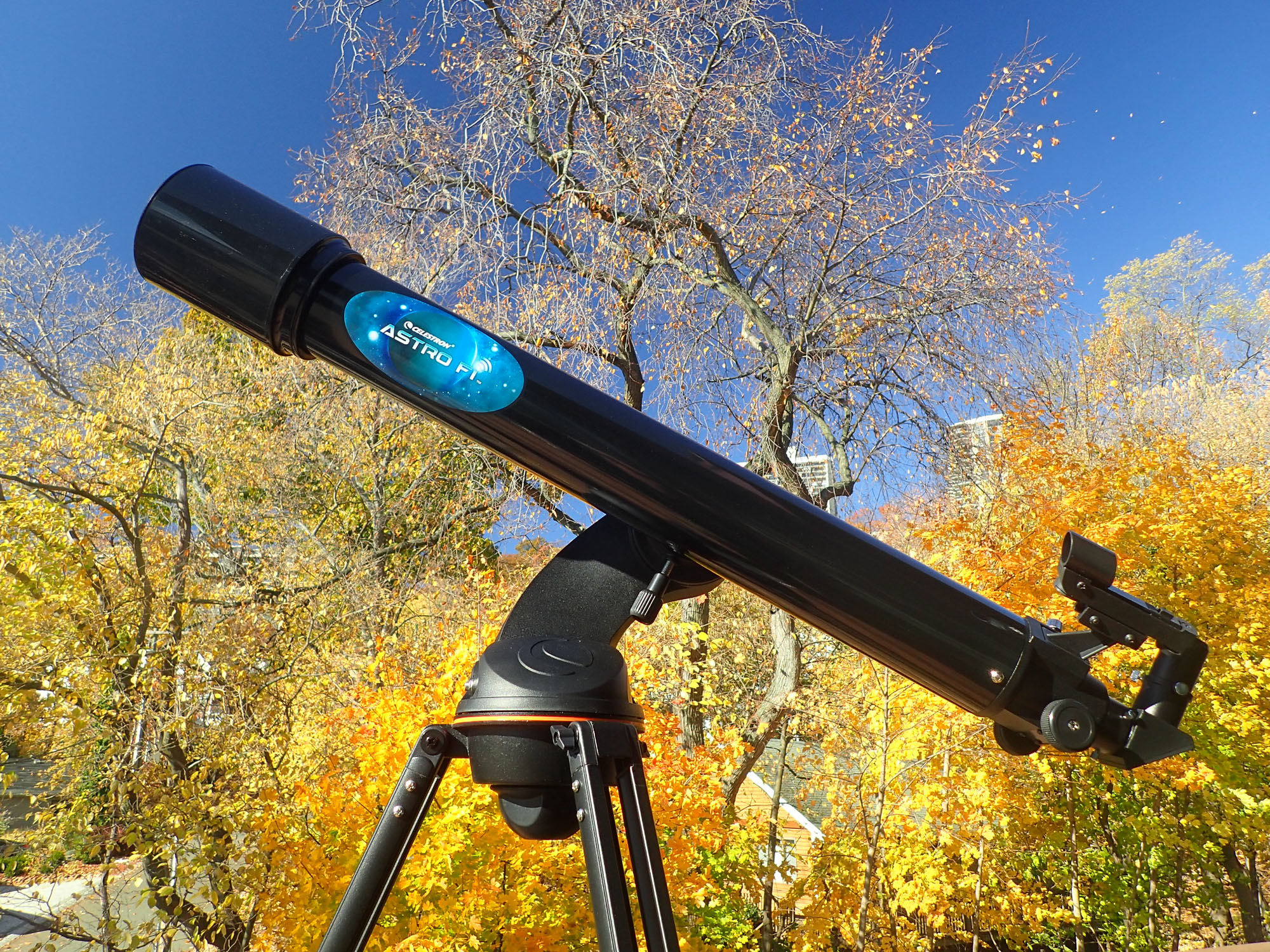
Like all refractors, the Astro Fi 90 suffers from a bit of chromatic aberration; you'll see a ring of color spectrum around bright objects as the shorter indigo and blue wavelengths are bent more (by the lens glass) than the longer, red wavelengths. To keep the price squarely in the first-time-buyer range, Celestron did not go to the much more expensive ED (extra-low-dispersion) glass and harder-to-cast lens architecture needed to reduce this colorful artifact. But if you're new to the hobby, we doubt this will bother you much.
The Astro Fi 102 Mak-Cas is more compact. It's a tad "slower" optically than its refractor cousin. But you won't see any "coma" ("hair") on objects. Stars are clean and bright, and you'll avoid the colored rings around planets and brighter stars that you can get with the Astro Fi 90 and many other refractor telescopes.
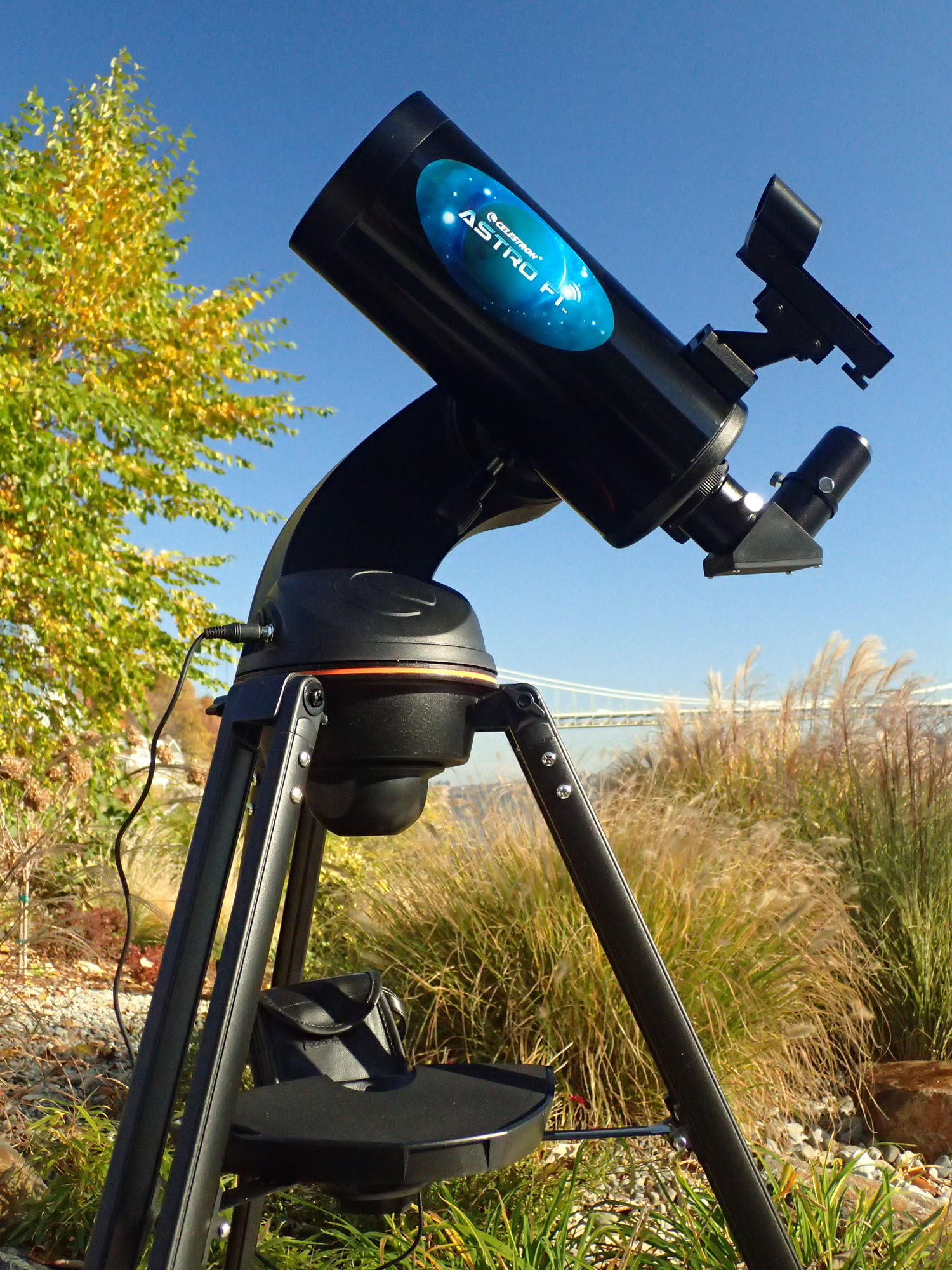
You might notice a little softness at the edges of your circular image with the 102 Mak-Cas. That's a characteristic of the hybrid mirror/lens design. All but the most expensive catadioptrics have fields that are less than flat. But it's actually a nice visual effect, and you'd slew to put your main target in the center anyway.
If you absolutely must have a reflector, Celestron offers the Astro Fi 130 Newtonian. But we found that big-tube reflectors riding on Celestron's one-arm altitude-azimuth mount (same for all three Astro Fi scopes) tend to wobble when the scope is slewed and wiggle when the wind blows. The 130 reflector also costs $20 more.
The aluminum tripod scared us a bit. It's softer than steel and could easily be bent. Worse, the legs have a rectangular cross section. If they take a serious dent, get twisted or become warped (all quite possible), they will not smoothly slide to their collapsed positions.
We do love the accessory tray, though. Not only does it serve as a spreader to lock the tripod in position, but the tray also has a sweet rubber-coated hump designed to rest your phone or small tablet at a viewable — but not "slip and fall" — angle. Of course, the tray also holds your eyepieces.
In summary, it feels altogether wizard-y the first time you touch your phone's screen and the long, thin telescope slews to a celestial sight. You're going to enjoy this!
- Best Telescopes for the Money - Reviews and Guide
- Best Telescopes for Beginners (Easy to Use)
- Best Telescopes for Kids
Follow the author @DavidSkyBrody. Follow us on Twitter @Spacedotcom and on Facebook.

Join our Space Forums to keep talking space on the latest missions, night sky and more! And if you have a news tip, correction or comment, let us know at: community@space.com.
Dave Brody has been a writer and Executive Producer at SPACE.com since January 2000. He created and hosted space science video for Starry Night astronomy software, Orion Telescopes and SPACE.com TV. A career space documentarian and journalist, Brody was the Supervising Producer of the long running Inside Space news magazine television program on SYFY. Follow Dave on Twitter @DavidSkyBrody.
